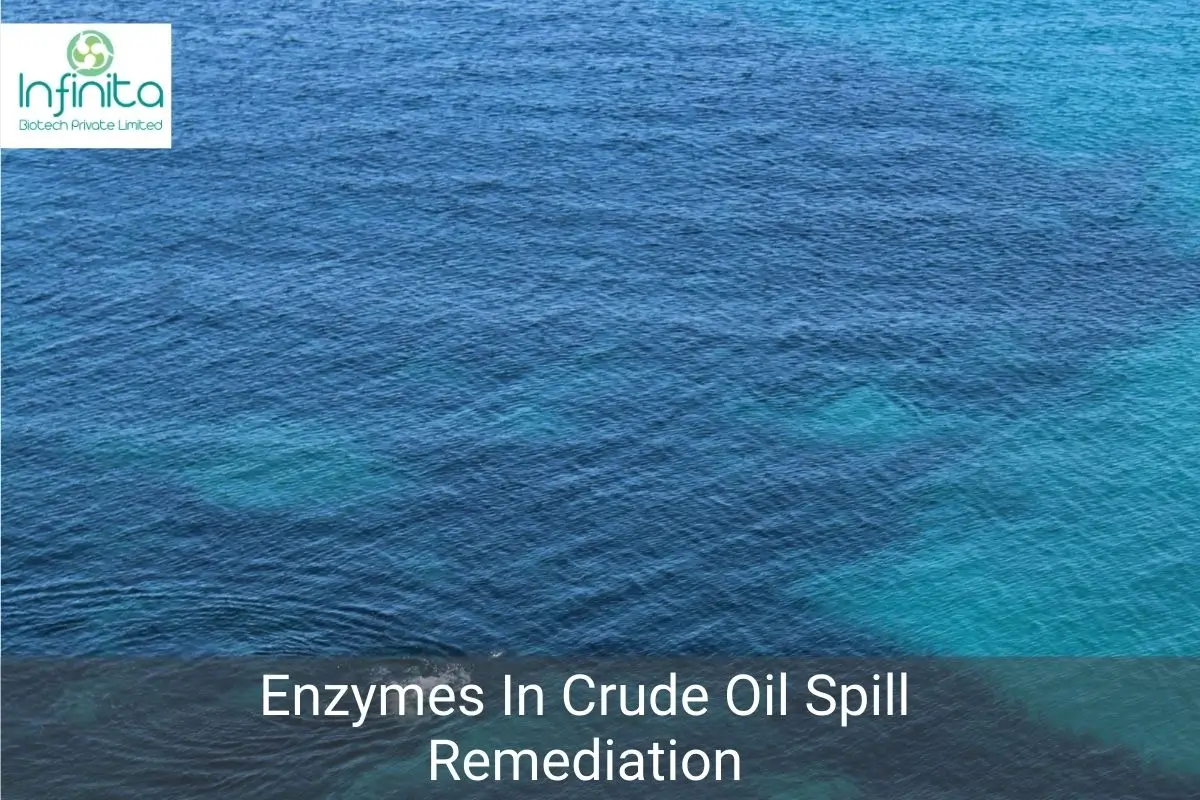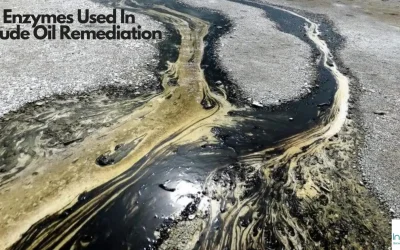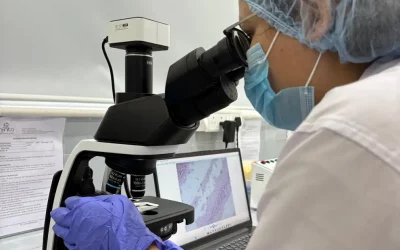Enzymes Used For Crude Oil Spill Remediation
Oil spills are release or spillage of liquid petroleum hydrocarbon into the environment. They have been a global issue from the time the oil industry has emerged and developed. Oil spills often happen during extraction, refinement, storage, and transportation of oil. This leads to the contamination of the area where petroleum has been released. The risk of oil spills has increased with the increase in global demand.
Harmful Effects Of Oil Spill
When spilled on-land, oil spills lead to immediate fire hazards. There have been several cases where people have died due to the fire. This fire, in turn, increases the air pollutants, and that leads to several respiratory diseases. If the oil spills into water supplies, it can contaminate drinking water. These also affect other industries, like if there is an oil spill, it’ll affect the tourism industry and industries related to marine resources extraction like fishing.
They are also a great threat to marine life. Several species of plants, birds, and animals have been affected because of them. Oil can damage a bird’s wings and its ability to fly. Birds can digest this oil on their features, and that causes digestive and liver problems. According to researchers, only 1% of birds affected by oil spills survive even after cleaning. Many animals identify their babies or parents by smell, and once the oil spills, its smell is so overpowering that it often leads to the babies being abandoned.
Oil Spill Remediation
The remediation process of an oil spill is extremely difficult. It depends on the type of oil, the water temperature where it spilled, the shoreline, etc. Even when spilled on land, its cleaning is an expensive process.
Types Of The Cleaning Process
Skimming: This method uses skimmers to remove the oil from water. The skimmers make sure the oil extracted brings as little water as possible, and this oil can be processed and made usable again. But this method is only effective in calm waters.
Controlled burning: when done properly, it can reduce great amounts of oil from water. But can only do this during low winds, and this method increases air pollution.
Dredging: This process is used to remove oil from liquids that are denser in volume than water.
Vacuum and centrifuge: In this method, they quite literally suck the oil up along with water. They then use a centrifuge to separate oil and water. This helps extract a tank full of pure oil, but the water is returned to the water body still contains some amount of oil and is hazardous.
Using of Dispersants: Dispersants break the oil into smaller droplets, and that disperses into the water. This reduces the immediate effect on marine life. But it is seen that these dispersants harm the fishes and indirectly on humans who consume these fishes in the long run.
Solidifying: Here, tiny pellets of dry ice are used as solidifiers. They float on the water surface and solidify the oil into a solid, almost rubber-like material. Then this solidified oil is removed from the water.
But all these methods have other adverse effects on the contaminated site.
Process Of Crude Oil Spill Remediation
Bioremediation
It is a process of oil spill remediation where microorganisms are used to break down the oil or even remove it. There are many bacteria that help in the degradation of oil and are usually present in abundance in areas of the oil spill. This method can be difficult because different bacteria react differently to types of petroleum hydrocarbons. Some bacteria break them down, and some there metabolize them. Enzymes play an important role in Bioremediation. The presence of higher enzymatic capacity in any microorganism allows them to degrade complex compounds of petroleum hydrocarbons. They transform the contaminants into final products less toxic. Enzymes act as a catalyst in the process of Bioremediation. This technique was more developed and improved after the Exxon Valdez oil spill in Alaska, where 41 million liters of petroleum spilled. It is a very cost-effective process.
How Does Bioremediation Work?
Many microorganisms degrade hydrocarbons compounds for energy. It is similar to how a human body uses chemical energy in food to provide us energy. Crude oil majorly consists of hydrocarbons, and when it spills, for oil spill remediation, microorganisms, especially bacteria, because it has the higher enzyme value, are release in the contaminated area. Through aerobic respiration, they then breathe oxygen and degrade/break down the hydrocarbons. This is similar to how we breathe and burn our energy. This is a comparatively slower process, but it does not have any side effects in the long term. Like this, the microorganisms end up cleaning the contaminated area.
The Process Of Selecting An Enzyme
Firstly, the enzyme should be able to degrade the contaminant into a less toxic product. It should also not depend on any other factor. Often enzymes can be affected by factors like temperature or pH level of the contaminant to avoid this, and they have to be commercially stabilized, increasing the cost. Then they select the enzyme that can work best for oil spill remediation. They then identify the gene encoding of this enzyme and, if necessary, increase the productivity. They then commercial produce it. Lastly, the monitor the shelf-life and environmental stability of the enzyme.
Different Enzymes Used For Crude Oil Bioremediation
Polycyclic aromatic hydrocarbons (PAH) are a type of hydrocarbon present in coal, crude oil, and gasoline. They can be detoxified by using laccases. Recent studies show that herbicides can be removed from water effectively using a product containing the enzyme TrzN. Enzymes such as lipase, alkane monooxygenase, esterase, and alcohol dehydrogenase are associated with crude oil degradation. It is estimated that there are over 1000s of enzymes used for crude oil bioremediation.
Advantages Of Using Enzymatic Bioremediation
It is easier to work with enzymes than the whole microorganism. This also helps prevent the release of genetically modified microorganisms or exotic microorganisms in the environment. This method is cheaper than other remediation techniques. They are fast and specific.
There is a lot more research being conducted in the field of enzymes used for crude oil spills. Integrated studies about the usage of enzymes for oil spill remediation show that it is an effective way to clean the contaminated areas. This techniques has come to light and is widely been accepted recently. Enzymes are being used in various industries because of their effectiveness. They save a lot of expenses on raw materials, chemicals, or energy required in other processes. Based on assessments, these enzymatic processes have properties that can clear the environment, which is extremely beneficial for all of us in the longer run. They also do not contribute to global warming as other cleaning processes do. It is a sustainable method.
The rate at which industries are growing, especially the oil industry, increases the hazards that come with them. These industries cause so much environmental degradation that we need to choose better sustainable methods to erase the hazards caused by them to help conserve the environment



